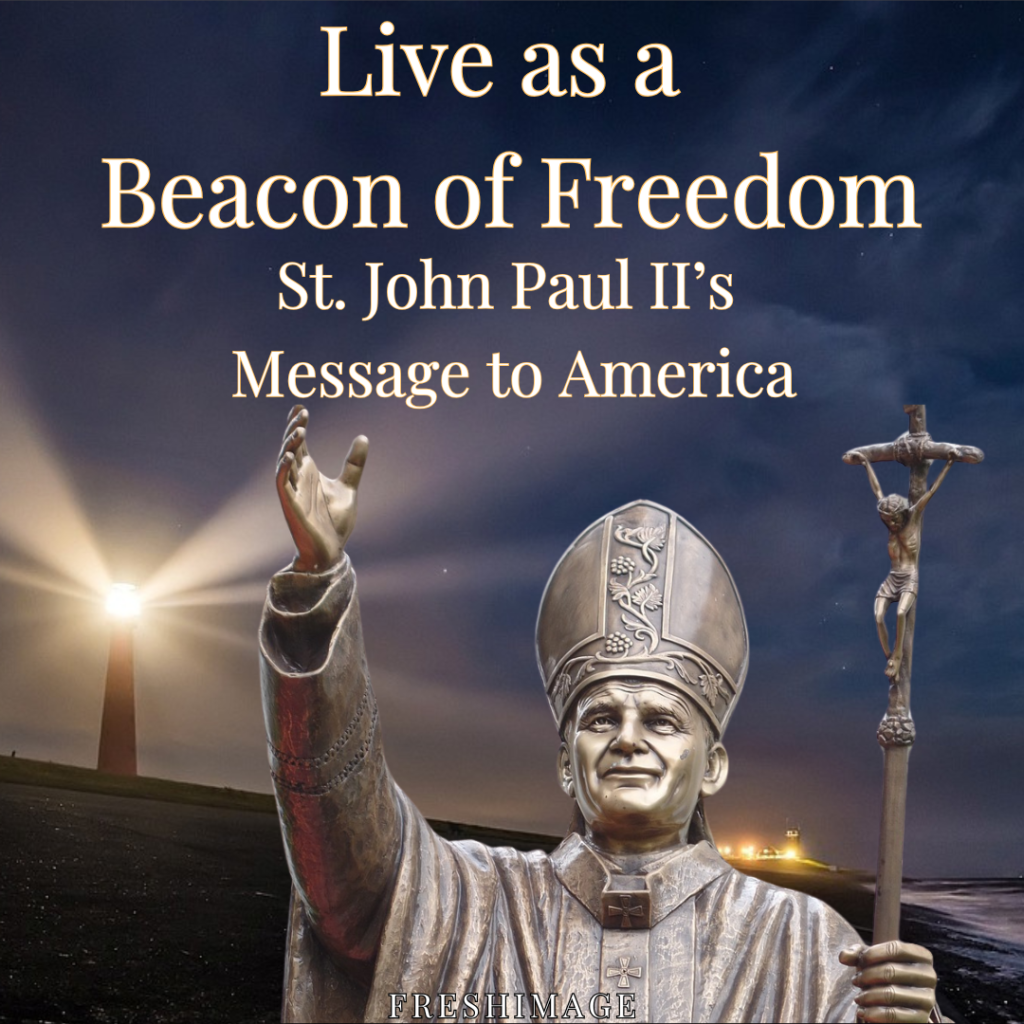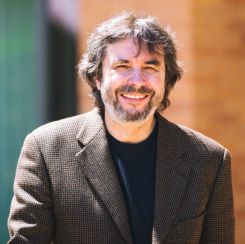
Not long ago, I reflected on the shared history of the cathedrals in St. Louis and New Orleans. A discussion of the historical connection between these two Catholic cities would be incomplete without considering significant events that further solidified the bond between them: the papal visits of St. John Paul II.
Pope John Paul II arrived in New Orleans aboard Shepherd One, a Boeing 777, on the evening of September 11, 1987. His stay was brief—only 36 hours—but the impact was profound. During that time, the pope managed to greet thousands of people, celebrate Mass at the Cathedral, and attend a reception with over 3,000 clergy members. He also visited the Superdome, where he addressed a group of Black Catholic leaders, participated in a youth rally, and even took part in a small-scale Mardi Gras parade. Despite his packed schedule, the pope found time to visit Xavier University, delivering a speech to Catholic educators. His visit culminated in an outdoor Mass on the Lakefront, near the University of New Orleans, attended by over 130,000 people.
Pope John Paul II’s two-day visit to St. Louis on January 26-27, 1999, was similar in its profundity. Not only was the late pontiff’s visit a milestone for the Catholic community, but also one of the most significant events in the city’s history. From the moment he stepped off the airplane, St. John Paul the II proclaimed the Gospel of Life. During his speech at the airport, the pope said to the American people:
My fervent prayer is that through the grace of God at work in the lives of Americans of every race, ethnic group, economic condition and creed, America will resist the culture of death and choose to stand steadfastly on the side of life (…which) involves rejecting every form of violence: the violence of poverty and hunger, which oppresses so many human beings; the violence of armed conflict, which does not resolve but only increases divisions and tensions; the violence of particularly abhorrent weapons such as anti-personnel mines; the violence of drug trafficking; the violence of racism; and the violence of mindless damage to the natural environment.
Another major moment of this papal visit, was the pontiff’s meeting with young people at the Kiel Center. A memorable image captured Mark McGwire, the professional baseball star, respectfully kissing the pope’s ring before he took the stage. Teri Seipel of KUCR radio described the atmosphere: when the pope finally came to the stage “the music, the hype, the performance dropped away… By his mere presence, His Holiness brought the kids to their feet, with sustained whoops, claps, cheers, tears, and shouts for 15 solid minutes.” The youth began chanting: JOHN PAUL II – WE LOVE YOU. St. John Paul II took this occasion as an opportunity to speak to the youth on the nature of freedom. The pope reminded the youth that when freedom is divorced from truth, “individuals lose their moral direction and the very fabric of society begins to unravel.” He challenged them to be a true light in the world, countering the darkness of doubt, uncertainty, loneliness, anxiety, isolation, hopelessness, and abuse.
The next morning, over 100,000 people gathered at the Trans World Dome for what became the largest indoor assembly in U.S. history to attend a papal Mass. Later that day, a Vespers service at the St. Louis Basilica welcomed not just Catholics, but people of all faiths, including Orthodox priests, Protestant clergy, Jewish rabbis, Buddhist monks, and political and business leaders like Vice President Al Gore. Despite his frail condition, the pope also found time for private meetings with figures such as President Bill Clinton and civil rights icon Rosa Parks.
What were the most enduring aspects of the pope’s message during these visits, and are they still relevant today? I believe much of his impact was conveyed through his personal demeanor. Those who met him consistently describe him as a man of deep warmth and genuine focus. Despite his busy schedule, he was never hurried when engaging with others. He embodied love and compassion, but never shied away from boldly addressing difficult or sensitive issues. Thus, in his homily at the St. Louis Cathedral, St. John Paul II exhorted the American people to live as a beacon of freedom for the world by living according to the truth:
“America first proclaimed its independence on the basis of self-evident moral truths. America will remain a beacon of freedom for the world as long as it stands by those moral truths which are the very heart of its historical experience. And so America: If you want peace, work for justice. If you want justice, defend life. If you want life, embrace the truth – the truth revealed by God” (from homily at the St. Louis Cathedral).

Andrzej Zahorski is Director of Music at St. Anselm Parish in St. Louis, MO. He holds a doctorate of musical arts from Stanford University.